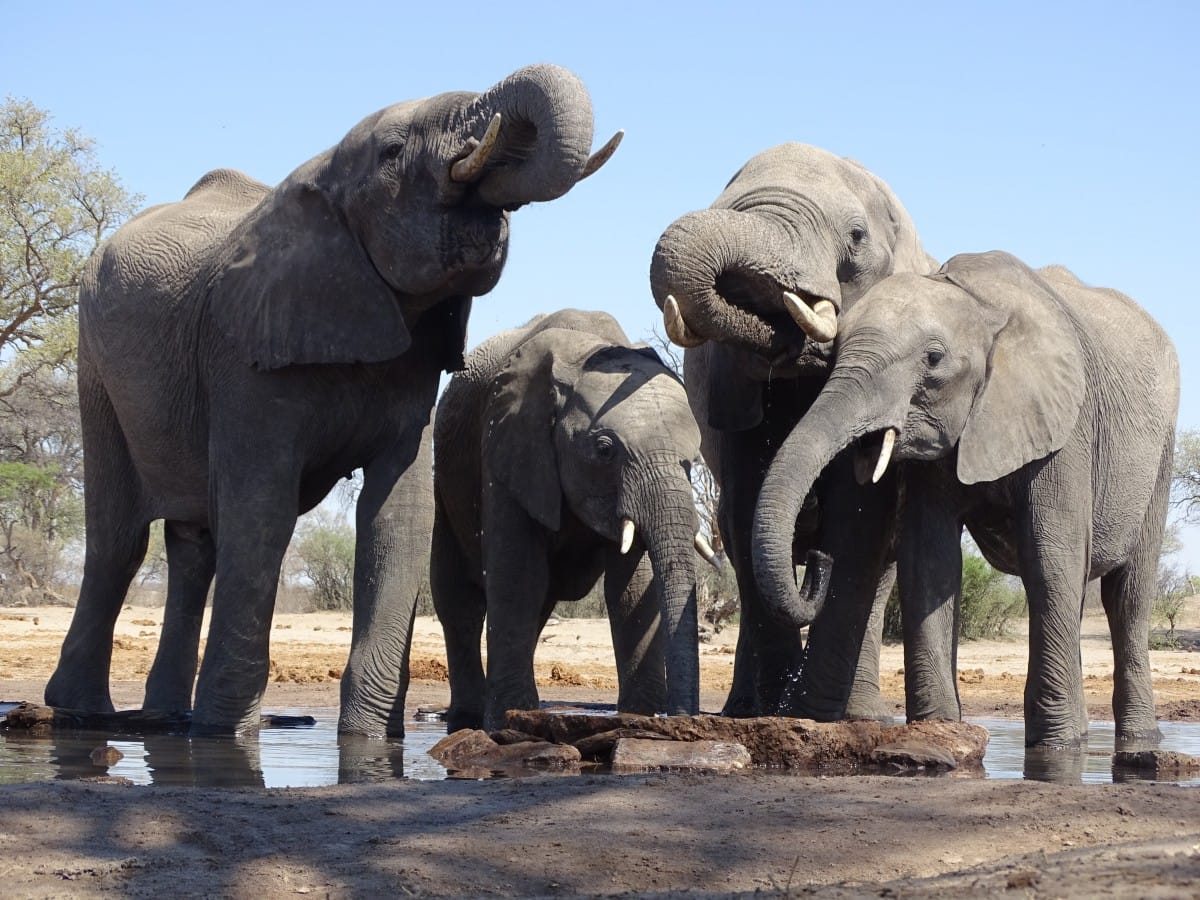It is widely believed that among mammals only elephants lack the ability to jump. We decided to check what science knows about the jumping ability of elephants and other animals.
This information more often meets V collections entertaining facts O animals. Sometimes she accompanied by ironic comment: And it’s good, since an animal with such weight cannot jump, otherwise humanity already has enough earthquakes. Major media also write about the inability of elephants to jump (magazine "Around the world», "Expert» And "BBC Russian Service»). In 2011 in Russian came out a book called “Why can’t elephants jump? And 113 more questions that will baffle any scientist,” in which scientists who popularize science collected the strangest questions about the world around us and tried to find answers to them.
Elephants are a family of mammals of the order proboscidea. All other representatives of this order are extinct animals, for example mastodons or meriteria. In the elephant family, only three species have survived to this day: the savanna elephant, the forest elephant and the Asian elephant. Among them, the largest is the savannah (or African), its weight Maybe exceed 6 tons. At the same time, elephants cannot be called slow - according to the non-profit association Elephants for Africa from Botswana, representatives of the family can reach speeds of up to 40 mph (64.37 km/h).
Bounce, as the dictionary says, is a method of movement that involves a short, brief takeoff into the air. From the point vision biologists, a jump is the ability to at some point tear off all limbs from the surface. However, in addition to the usual jump, in which take-off is ensured by the strength of the lower limbs, some animals also have the ability to jump, pushing off with their hands. This method of transportation called brachiation and is characteristic of some primates, such as gibbons.
Professor of evolutionary biomechanics at the Royal Veterinary College in London, John Hutchinson, has devoted his scientific career to the study of elephant locomotion. In an interview with Live Science, he confirmed, that elephants really cannot jump in our usual understanding of the mechanics of this movement (that is, lifting all four limbs off the ground at the same time). However, science does not have an exact answer why animals are deprived of this ability. The main theory today is their anatomy: “Animals that jump need really flexible ankles, strong Achilles tendons and calf muscles, but elephants have weak calf muscles and not very flexible ankles.” According to the professor, trying to jump like a kangaroo for an elephant can end sadly. If the animal stumbles and falls, then due to its enormous weight, serious injuries will be inevitable. The second probable reason why the elephant does not jump is that for most animals, a jump is an opportunity, thanks to a sudden movement in space, to escape from a threat, primarily from a predator. But, as Hutchinson says, “being big is in itself a good defense,” so such a heavyweight does not need additional mechanisms for avoiding danger.
Moreover, the scientist ironically notes that the formulation “an elephant cannot jump” is not entirely correct. Although scientists were unable to record the elephant's jumps, this does not mean the animal is absolutely incapable. “Perhaps the elephants are just shy,” the specialist jokes. He and his colleagues also put The running speed of elephants is questioned - as part of their observations, they never recorded a speed higher than 15 miles per hour (24.14 km/h), which is more than two times less than the results of Botswana observers. According to scientists, even when running, one of the elephant's legs always remains on the ground, unlike other large animals. The same rhinoceroses, for example, while running for short periods of time, lift all four legs off the ground, which formally can be considered a jump.
However, the elephant is by no means the only mammal that cannot jump. There are also those who, not having such enormous weight, are deprived of the ability that interests us, for example, sloths. These mammals from the order of edentates spend most of their lives in trees, literally in limbo and are going down down mainly to defecate and also to change the tree. Becky Cliff, a British zoologist working for the Costa Rican Sloth Conservation Foundation, confirmsthat sloths cannot not only jump, but also run. Due to the peculiarities of their way of life, the hind legs of sloths, unlike the front ones, do not have strong enough muscles, which makes it impossible to move quickly or move with all four limbs off the surface. After descending from the tree, the sloth mainly crawls. The speed of movement of sloths, which depends on the metabolic rate of the animals, also makes them incapable of brachiation. You can see how a sloth moves in a video from the Moscow Zoo.
Despite their general slowness, sloths, by the way, swim very well - the animal’s speed in water is much higher than when moving on land.
Thus, the statement that elephants are the only mammals that cannot jump is only half true. Scientists, indeed, have never seen an elephant jumping, and elephants are not alone in their inability. At least they have sloths for company. But other heavyweights, such as rhinoceroses, are quite capable of tearing all four limbs off the surface while running.
Cover image: Pxhere

Not true
Read on the topic:
- Is it true that boa constrictors strangle their victims?
- Is it true that all fish are dumb?
- Is it true that crocodiles cry when they eat their victims?
- Is it true that chameleons change color for camouflage purposes?
- Is it true that crayfish don't hurt when they're boiled?
If you find a spelling or grammatical error, please let us know by highlighting the error text and clicking Ctrl+Enter.






